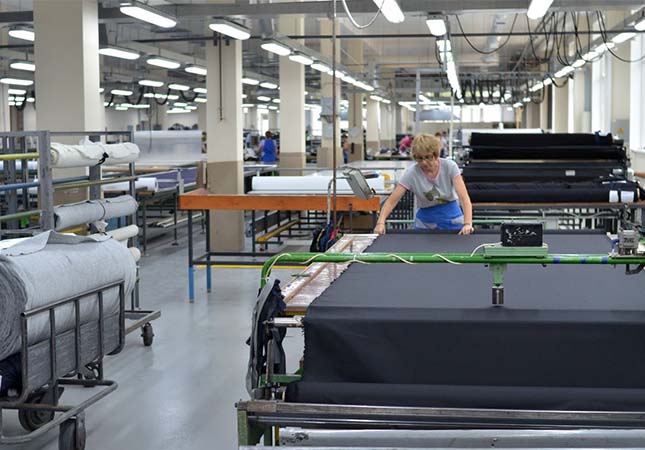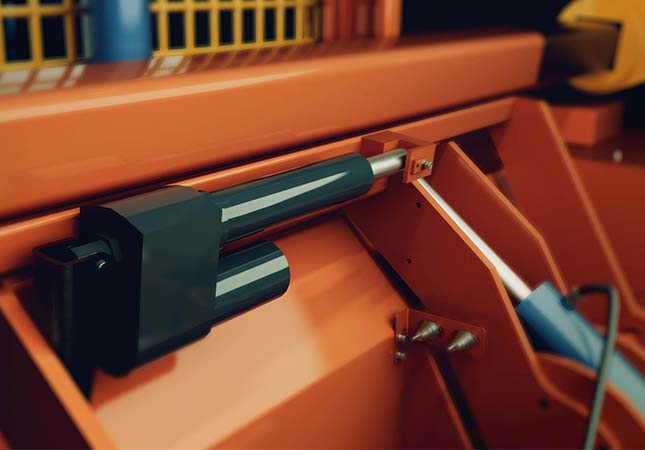2020 Third Quarter National Top 100 Occupations in High Demand" list, released by the China Employment Training Technical Guidance Center of the Ministry of Human Resources and Social Security, indicates a significant recovery in China's manufacturing industry during the third quarter, leading to a strong demand for skilled workers. Among the 28 newly listed occupations, 19 are directly related to the manufacturing industry, accounting for 67.9% of the total; and among the 15 occupations experiencing increased shortages, 5 are directly linked to manufacturing, making up 30%.

Perhaps, artificial intelligence (AI) could be the breakthrough for the textile industry. In the future, with the development and widespread adoption of AI, many labor-intensive tasks in the textile industry, such as assembly line operations and warehousing, can be replaced by robots. Furthermore, intelligent information systems could be implemented for textile warehousing management.
Currently, as a long-established machinery company with 50 years of design experience and technical expertise, SUNTECH possesses internationally leading intelligent machinery technology. They have developed and designed textile machinery, such as fabric inspection machines, fabric packaging lines, and packaging machines, as well as intelligent machinery like AGVs (Automated Guided Vehicles), industrial robots, and automated warehouses. They also provide handling and warehousing equipment such as shaft racks and motorized beam trolley. SUNTECH's products have penetrated various sectors of the textile industry, optimizing different production processes and significantly enhancing production efficiency and product quality through mechanization, automation, and intelligent management.
The application of motorized beam trolley can substantially reduce the demand for manual labor, decrease accident rates, and improve handling and warehousing efficiency. With over 50 years of design experience and technical expertise, SUNTECH Textile Machinery has gained more than 5,000 global customers and completed over 17,000 successful cases. According to customer feedback, a single motorized shaft car can increase handling efficiency by over 50% and save more than 60% in labor and cost, resulting in annual cost savings in the hundreds of thousands.

SUNTECH motorized beam trolley is precisely designed to seamlessly remove warp beams and cloth rolls from the looms and smoothly load them onto the beam trolley. After stable transportation, they are delivered to the shaft warehouse. Through mechanical lifting processes, the warp beams and cloth rolls are loaded into the warehouse. The motorized beam trolley exhibit responsive and smooth operation, ease of use, high loading capacity, and minimal handling frequency, making them suitable for various work environments. They compensate for the drawbacks of manual handling, reduce the labor intensity of handling workers in the textile industry, improve work efficiency, significantly lower labor costs, and enhance production effectiveness and product quality.
ST-MBT-02I is the newest model, suitable for bottom beam transporting, inserting in weaving machines, weave beams weighing up to 1800kg and beam width as per requirement, additional loading capacity of 300kg for the harness. The trolley is applicable for any weaving machines with their normal working width of 170-340cm without changing its size.
The harness is accommodated by the standard take-up for the harness frame and the contact rails and dividing rails or the complete weave stop motion. You can take a look at our Motorized Beam Trolley.
There is a complete motorized trolley and consists of 3 systems---- driving system, beam lifting system and harness mounting system.
Driving System
The trolley moves on two drive wheels and three supporting wheels, the direction of travel is controlled by the handle.
(1) Turn the handle to the linear position and retract the beam lifting system, flip the speed knob to drive the trolley, it is to drive long distances.
(2) Turn the handle to the vertical position and extend the beam lifting system, and flip the speed knob to drive the trolley, it is to reach the weaving beam/looms. At this time, the left or right driving wheels can be controlled separately to adjust the parallelism of the trolley and the beam/loom. The handle is driven by an electric steering system and makes the turning five times less labor than normal.
Beam Lifting System
When the trolley moves closer to the beam/loom, the operator can find adjust the hook position to load the beam onto the loom or pick the beam up from the loom.
Here we apply【Side Shift Function】, when the trolley is standing still, the hook can transversely move left and right 100mm. This function is very convenient, safe and time-saving when adjusting beam position in a very limited space. The function is driven by an electric linear actuator, more stable and easy to maintain compared with the oil cylinder.
The hook has detachable pads to accommodate different beams’ heads, such as those of The Picanol and Toyota.
Harness Mounting System
The operator can control the harness mounting device going up, going down, stretching and contracting both by the handle and the remote to load/unload heald frames & droppers.
The harness mounting device is driven by an electric linear actuator. When loading work onto looms, the harness mounting device can reach the rough position by handle operation, then the worker can walk to the other side of the loom for more clear observation, and do fine insertion precisely by the remote. It makes the working process more convenient, more accurate, and safer.
As an established machinery manufacturing enterprise, SUNTECH Textile Machinery started with textile and warehousing machinery equipment and possesses internationally leading core technology. They have developed and produced electric shaft cars that can intelligently handle a large number of fabric rolls, cloth materials, warp beams, and cloth rolls. These electric shaft cars have small footprints, large capacity, fast handling speed, flexible movement, stable transportation, and smooth loading and unloading capabilities. They exhibit strong adaptability to various work environments, reducing the need for manual operations, enhancing work efficiency, and supporting efficient production through electric and intelligent shaft cars. This, in turn, reduces labor costs and increases profitability in the textile industry.




